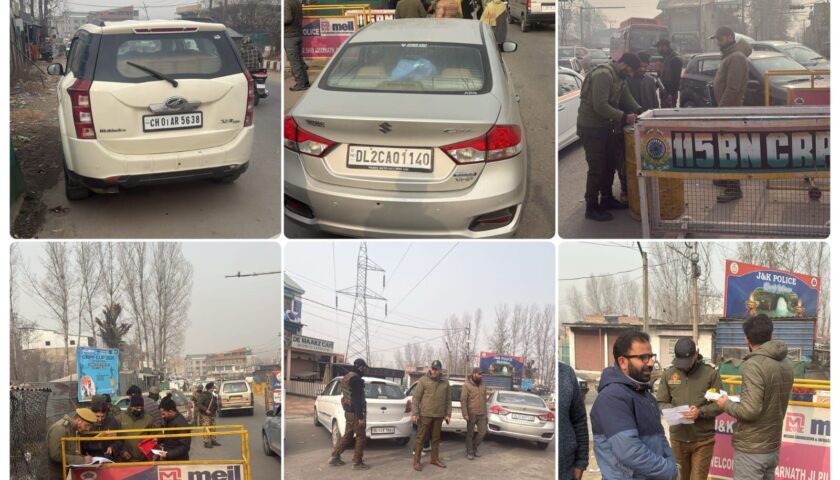Understanding the Rise in Youth Suicides in Kashmir: A Multifaceted Crisis
By: Javid Amin
Kashmir, a land known for its breathtaking beauty, is facing a growing crisis – a surge in suicides among its youth. This alarming trend has sent shockwaves through society, leaving families devastated and communities searching for answers. Over the past few months, these tragic incidents have become disturbingly frequent, prompting urgent calls to action.
While the exact causes of this phenomenon remain complex, experts point to a confluence of factors that are pushing young people to the brink. This in-depth exploration delves into the potential triggers, societal shifts, and potential solutions to address this silent storm.
Media Hype and the “Copycat Effect”: A Delicate Balance
Professor Arshad Hussain, a leading psychiatrist at the Government Medical College (GMC) in Srinagar, raises a critical concern – the potential for media coverage to inadvertently fuel the fire. He highlights a phenomenon known as the “copycat effect,” where sensationalized reports about suicides can inspire similar acts in vulnerable individuals. Dr. Hussain emphasizes the need for responsible media practices, advocating for guidelines established by the World Health Organization (WHO) to prevent triggering copycat behavior.
However, navigating this delicate balance is crucial. Dr. Hussain acknowledges that appropriately framed media reports can play a vital role in raising awareness and promoting suicide prevention. The key lies in avoiding sensationalism and focusing on providing resources and information for those struggling.
This calls for collaboration between mental health professionals, media outlets, and government agencies. Joint efforts can ensure that media coverage is informative, supportive, and avoids glorifying suicide.
Beyond “Copycat”: Examining Societal Disconnect and Shifting Parenting Styles
While media coverage is a contributing factor, it’s far from the only one. Professor Muhammad Maqbool Dar, Head of the Psychiatry Department at GMC Srinagar, identifies other critical issues. He cites “intolerance” as a significant issue, fueled by a combination of academic pressure and a lack of healthy coping mechanisms.
Professor Dar further points towards a shift in parenting styles. Today’s fast-paced world often leaves parents with less time to invest in their children’s emotional well-being. This lack of connection can create feelings of isolation and a disconnect within families.
Further exacerbating the issue is the “rat race” mentality, where children are pressured to excel academically. This constant striving for perfection fuels frustration and intolerance.
The Changing Landscape: Technology, Social Media, and Familial Bonds
Social media and technology are woven into the fabric of our daily lives, especially for the younger generation. While these tools offer opportunities for connection and information, they also present challenges.
Counselors working with young people in Srinagar report an alarming trend – children as young as four experiencing mental health issues. Overprotective parenting styles and constant comparisons with siblings can contribute to feelings of inadequacy and low self-esteem.
Sociologist Khurshid-ul-Islam paints a broader picture. He points to a societal shift characterized by a decline in traditional family structures. The time spent together has dwindled, replaced by an obsession with electronic gadgets and virtual connections.
This digital world presents both benefits and drawbacks. While it allows for wider social networks, it also exposes young minds to unfiltered content. Social media feeds tend to portray an idealized version of reality, which can fuel feelings of inadequacy and isolation.
Breaking the Silence: Towards a Brighter Future
The surge in youth suicides in Kashmir demands a multi-pronged approach. Here are some potential strategies for moving forward:
- Media Responsibility: Implement WHO and national guidelines for suicide reporting to minimize the risk of copycat behavior. Focus on providing resources and fostering hope.
- Strengthening Families: Encourage open communication and quality time within families. Parenting workshops and support groups can equip parents with tools to address their children’s mental health needs.
- Combating Academic Pressure: Promote a holistic approach to education that prioritizes well-being alongside academic performance. Encourage healthy coping mechanisms for dealing with stress.
- Promoting Mental Health Awareness: Destigmatize mental illness and encourage individuals to seek help when needed. Increase access to mental health professionals and create safe spaces for young people to express their struggles.
- Harnessing Technology for Good: Leverage technology to disseminate mental health information and resources. Partner with social media platforms to develop responsible content moderation policies.
Community Voices and Hope in the Face of Tragedy
The surge in youth suicides in Kashmir is a complex issue with no single answer. While the statistics are alarming, it’s important to remember that these are not just numbers – they represent lives cut tragically short and families left grappling with grief.
To gain a deeper understanding of this crisis, we turn to the voices of those directly impacted – the youth themselves, their families, and the community members working tirelessly to provide support.
The Lived Experience: Young People Speak Out
Sitting across from Sarah (name changed), a bright-eyed 18-year-old student in Srinagar, a sense of quiet desperation hangs in the air. “The pressure is relentless,” she confides. “Everyone expects you to excel, to be perfect. There’s no room for failure.” Social media, she adds, paints a picture of a flawless world, further amplifying feelings of inadequacy. “It’s hard not to compare yourself,” she says with a sigh.
Sarah’s story is not unique. Many young people in Kashmir echo similar sentiments. They speak of feeling overwhelmed by academic pressure, societal expectations, and a sense of isolation. The fast-paced world they navigate can feel unforgiving, leaving them struggling to cope with emotional challenges.
Standing With Families: Bearing the Unbearable
For families who have lost loved ones to suicide, the pain is raw and ever-present. Imagine the unimaginable – burying your child, the future you envisioned for them shattered in an instant. These families grapple not only with grief but also with the weight of unanswered questions and the stigma often associated with suicide.
Meeting with a grieving mother in Srinagar, her voice cracks as she speaks of her son, a talented young musician. “There were signs,” she whispers, the weight of regret heavy in her voice. “We just didn’t know what to look for.” Her story underscores the urgent need for increased awareness of mental health issues and the importance of open communication within families.
Beacons of Hope: Community Efforts Make a Difference
Amidst the darkness, there are glimmers of hope. Dedicated individuals and organizations are working tirelessly to address the crisis. Support groups offer safe spaces for young people to share their struggles and connect with others who understand.
Mental health professionals are conducting workshops in schools and communities, raising awareness and encouraging help-seeking behavior. Crisis hotlines provide a vital lifeline for those in immediate distress.
These efforts, though nascent, are making a difference. By fostering a culture of empathy and understanding, these organizations are helping to break the silence surrounding mental health and create a support system for vulnerable youth.
Building Resilience: Empowering Youth with Coping Mechanisms
While addressing the root causes of youth suicide is crucial, equipping young people with coping mechanisms is equally important. Here are some strategies to build resilience and foster emotional well-being:
- Mindfulness and Relaxation Techniques: Practices like meditation, deep breathing exercises, and yoga can help young people manage stress and anxiety. These techniques offer tools to navigate emotional challenges and cultivate a sense of calm.
- Creative Expression: Encourage artistic exploration through writing, music, or visual arts. Creative outlets provide a safe space to channel emotions and build self-expression skills.
- Building Healthy Relationships: Nurturing strong social connections is vital for emotional well-being. Encourage young people to engage with friends, family members, and positive role models who offer support and understanding.
- Physical Activity: Regular exercise releases endorphins, natural mood elevators, and promotes overall well-being. Physical activity can be a powerful tool for managing stress and anxiety.
- Building Self-Esteem: Help young people develop a positive self-image by focusing on their strengths and accomplishments. Challenge negative self-talk and encourage acceptance of self.
- Time Management Skills: Equip young people with strategies to manage their time effectively. Prioritization and organization can alleviate stress related to studies and other commitments.
Fostering Open Communication
Open communication within families is a critical piece of the puzzle. Here are some tips for creating a safe space for your child to express their struggles:
- Create a listening environment: Set aside time to talk and really listen to your child without interrupting or judgment.
- Normalize talking about mental health: Openly discuss the importance of mental well-being and encourage them to express their feelings.
- Validate their emotions: Acknowledge their emotions and let them know that it’s okay to not be okay.
- Provide resources: Familiarize yourself with available resources and share them with your child. Let them know that help is available.
Advocacy and Raising Awareness
The voices of young people and their families need to be heard. Here’s how you can join the fight against youth suicide:
- Support Mental Health Organizations: Donate to or volunteer with organizations working on mental health awareness and suicide prevention programs in Kashmir.
- Spread Awareness: Talk openly about youth suicide and educate others about the warning signs. Challenge the stigma surrounding mental health.
- Advocate for Change: Lobby for increased funding for mental health services and support policy changes that promote well-being in educational institutions.
This fight is not for a select few, but for the future of Kashmir’s youth. By working together, fostering open communication, building resilience, and advocating for change, we can create a brighter future for generations to come.
Resources and Support
If you are struggling with suicidal thoughts, please know that you are not alone. There is help available, and there is hope for the future. Here are some resources:
- National Suicide Prevention Lifeline (India): 116 123
- AASRA (India): 91+22-27546669 (24/7)
- Befrienders Worldwide: https://befrienders.org/members/ (Provides contact information for suicide prevention hotlines around the world)
Remember, reaching out for help is a sign of strength, not weakness.
Conclusion: A Call to Action
The surge in youth suicides in Kashmir is a wake-up call. It compels us to confront the challenges young people face and to work together to create a more supportive environment. By fostering open communication, dismantling the stigma around mental health, and prioritizing well-being, we can prevent future tragedies.
By addressing these issues head-on, we can create a safer and more supportive environment for Kashmir’s youth. By fostering open communication, building resilience, and prioritizing mental well-being, we can break the silence and prevent further tragedies.




